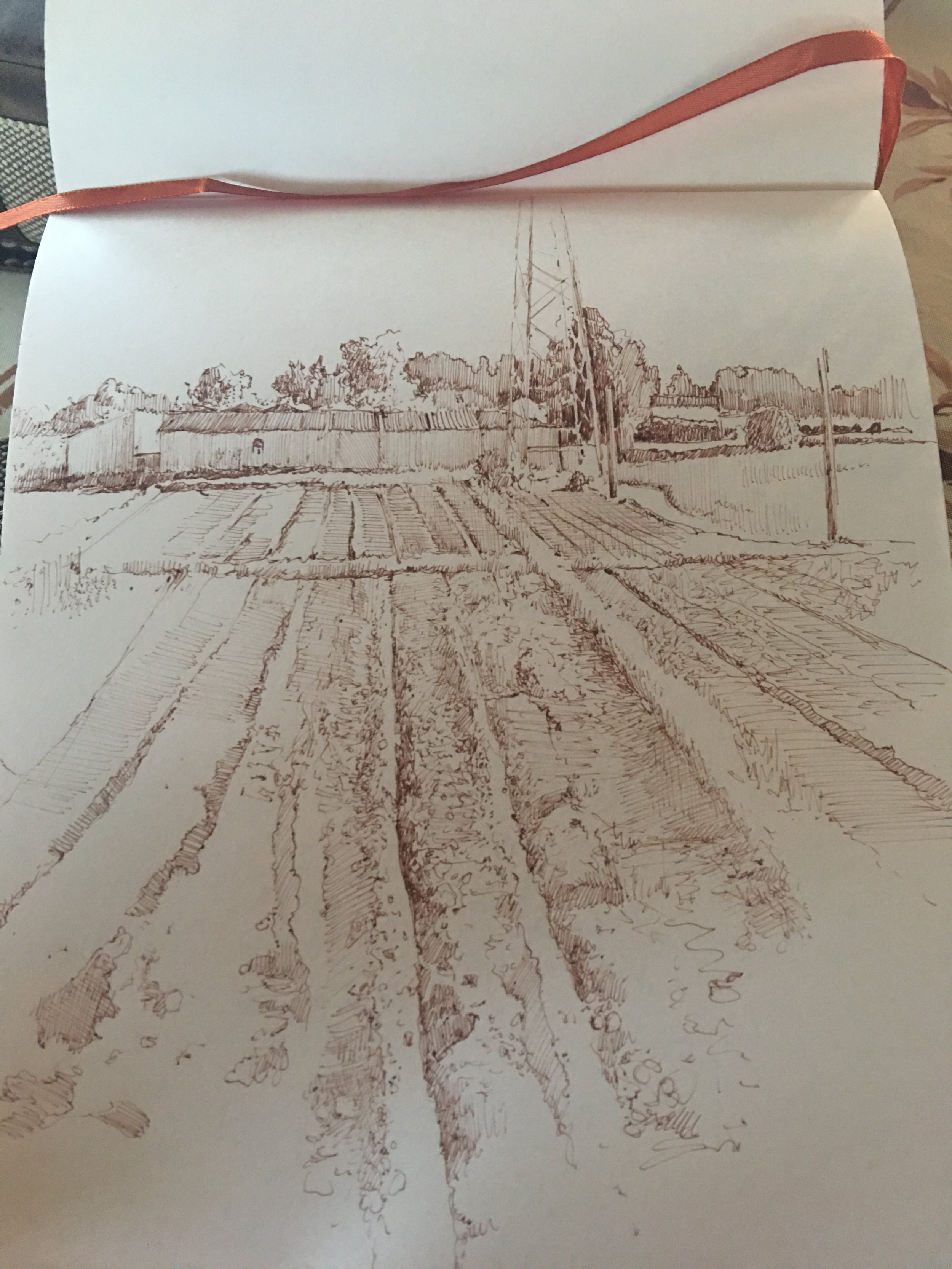
Welcome to My Studio
Since encaustic isn’t easily adapted to working on location, my process involves numerous preparatory drawings, color studies, reworking, and substantial reliance on memory.
Within my studio, alchemy, dental tools, putty knives, sandpaper and razor blades play roles traditionally reserved for brushes. I do not consider myself “an encaustic painter;” rather, I paint with encaustic, as I paint with gouache, watercolor, oil, and other mediums as well as application tools I can find to explore what I am looking at. Each medium has its unique identity, language, beauties, and challenges. I find the interplay and dialogue one can create during a multi-medium practice far outweighs the benefits of shortcutting, or creating a formula that works each time to get “good at one thing.” Looking for the easy way rarely produces anything of lasting impact. As an artist, my job is not to know, but to see–to sacrifice a superficial, efficient sense of “knowing” in order to be free enough to lean into a new knowing… a more intimate kind.
Mediums of Choice
-

Encaustic
True encaustic is painted on prepared wood panels using dry pigments added to melted beeswax, and dammar crystals. Work proceeds while paint is warmed from stove or heat gun using a variety of tools, until the final step of burning in, solidifying the structure of the work. Among the most permanent of mediums, encaustic will never darken, yellow, crack or fade. Care of encaustic paintings involves hand buffing with a soft, lint-free cloth using a circular motion to bring up a luster. Repeated polishings actually harden the surface, further enhancing its permanence. Periodically buffing an encaustic painting allows the owner to be more intimately connected to their painting.
-

Gouache
Gouache is an aqueous medium with qualities that hover in that particular space between watercolor and egg tempera. The paint film ranges from translucent to opaque, dries quickly and lends itself to a wide variety of applications. Gouache may be brushed on in fluid washes, scumbled or applied in a dry brush technique, spattered or even transferred to the paper or illustration board. The medium may be re-wet and lifted out, or even lightly sanded. The final surface of a gouache painting has a lovely soft matte finish making it perfect for photographic reproduction. Gouache is a very portable medium making it one of my favorites for on site plein air painting or studio color studies. Finally, it is the perfect medium for toning paper for use with ink, silverpoint, or even pastel.
-

Egg Tempera
A medium that predates oil paint characterized by a slow deliberate application usually with many layers in a step by step method. The paint itself is translucent to varying degrees, dries quickly and is generally hand ground in the studio using yolk of egg, distilled water, and dry pigment. The almost precious nature of this preparation adds to the meditative nature of the process. Egg tempera paintings have a singular soft beauty and are often coaxed as opposed to forced on the viewer.
-

Metalpoint
Metalpoint and silverpoint drawing date back to pre-Renaissance times and have been practiced throughout the centuries by artists from Leonardo and Michelangelo up to the present day. A metal wire is placed in a stylus and when drawn across a specially prepared surface, will leave a deposit behind. The unique properties of each type of metal will determine the final drawing’s appearance, with different metals tarnishing (or not) to specific patinas. Silver turns a warm color, copper turns a greenish tone, and so on.
-

Pastel
One of the most direct mediums focused almost entirely on color is pastel. There is usually no brush or additive between choosing a color and applying it to the chosen surface.
Pastel is capable of a huge range of marks, blending and textures from crumbly to satin smooth. Its compatibility with gouache and ease of use along with multi layering techniques makes it suitable for sketches or finished works.
-

Graphite and Pen
For my practice, drawing is the foundation. Putting pencil, pen, metal point to paper is the initial conduit for realizing my ultimate vision. The intimacy of drawing and relative accessibility allows for a range from the most fluid searching to robust highly finished work.
I use graphite and pen for casual warmups, compositional planning, perspective and value studies. Since encaustic isn’t easily used for plein air, accurate drawings and other forms of notation have become a critical preparation for finished work in other mediums. Finally, drawing has an inherent dreamlike, often romantic connection with perceived reality, a place for emotion to find purpose. It can allow me to get to the core of something.











